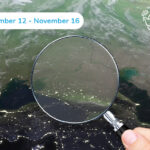Early on Tuesday, Armenia and Azerbaijan announced an agreement to halt the fighting over Nagorno-Karabakh in a deal brokered by Russia.
On September 27, fighting once again erupted in Nagorno-Karabakh, leading to six weeks of the worst bloodshed since the 1994 ceasefire. During the course of the renewed fighting, ceasefires were negotiated first by Russia, then France, and then the United States, and each of those ceasefires were violated almost immediately.
On Sunday November 8, Azerbaijani president Ilham Aliyev claimed that his forces had captured the key city of Shusha/Shushi, effectively cutting off Armenian access to the region’s capital city and crippling the ethnic Armenian forces in the Region. On Monday November 9, Azerbaijan apologized for the downing of a Russian military helicopter over Armenia. The crash killed two Russian crew members and injured one.
Early on Tuesday November 10, Armenia and Azerbaijan announced that they had agreed to a Russian-brokered ceasefire.
Terms of the ceasefire Agreement
The ceasefire agreement establishes the immediate cessation of hostilities. It allows for each party to maintain the positions which they currently occupy in the region, though Armenia will return the Agdam district, the Kalbajar district, and the Lachin district to Azerbaijan. Russian will deploy nearly 2,000 peacekeeping forces to Nagorno-Karabakh for at least five years along the conflict line and the Lachin corridor. Russia will also establish a peacekeeping command post in the region.
The agreement also provides for the construction of a new route along the Lachin corridor to connect Nagorno-Karabakh with Armenia. Armenia must also guarantee safe passage in a transportation corridor which would connect Azerbaijan and the Nakhchivan Autonomous Republic.
The UN Office of the High Commissioner for Refugees (UNHCR) will oversee the return of internally displaced persons and refugees to Nagorno-Karabakh and the surrounding regions. Armenia and Azerbaijan will exchange prisoners of war, hostages and other detainees, and the remains of casualties.
Armenian Protests and Azeri Celebrations
After the announcement of the ceasefire on Tuesday, thousands of people swarmed into the main square in the Armenian capital of Yerevan to protest the agreement. Protesters called for Armenian Prime Minister Nikol Pashinyan to resign and they stormed the parliament building. They damaged the building and beat the president of the Armenian Speaker of Parliament Ararat Mirzoyan to the point that he needed surgery. Protests have continued in Yerevan since Tuesday and there is no sign that they will stop soon.
In Azerbaijan’s capital of Baku and other Azerbaijani cities celebrations broke out on the streets over the ceasefire agreement on Tuesday. People waved the Azeri national flag, honked car and bus horns, and lauded what they consider to be a victory.
International Implication
Although the international community has displayed grave concern over the situation in Nagorno-Karabakh, its efforts have done little to resolve the current conflict. Each of the Minsk group co-chair states of Russia, France, and the United States negotiated ceasefires which were violated almost as soon as they were signed. Russia was finally able to negotiate a lasting ceasefire after Azerbaijan took Shusha/Shushi and the ethnic Armenian forces recognized their dire condition. The ceasefire was a matter of necessity and not a triumph of diplomacy.
The international community has yet to forcefully repudiate Turkey for the role it played in stoking the flames of conflict. The Russian-Turkish ceasefire monitoring center sets a troubling precedent of Turkish and Russian influence in the region.
Sources: AP, CNN, Reuters, Wall Street Journal, New York Times, NPR, BBC, Al Jazeera, The Kremlin, France 24, TASS, OHCHR report

